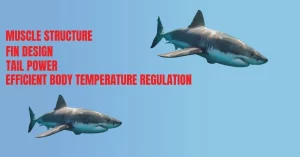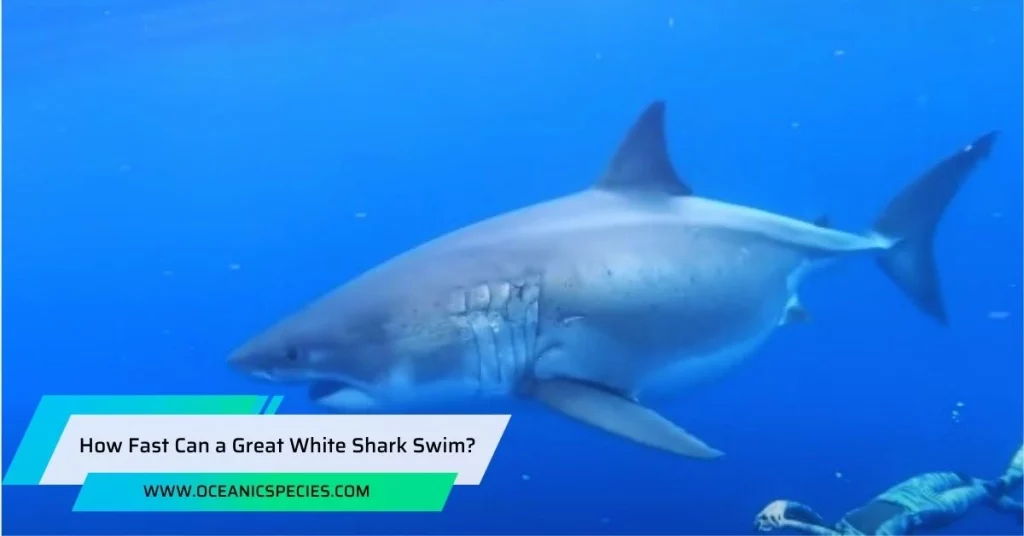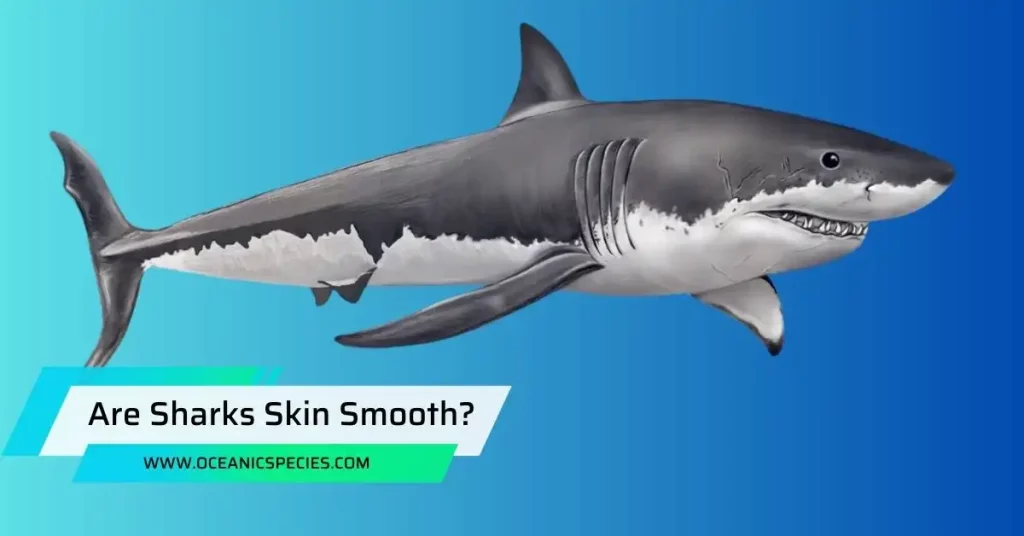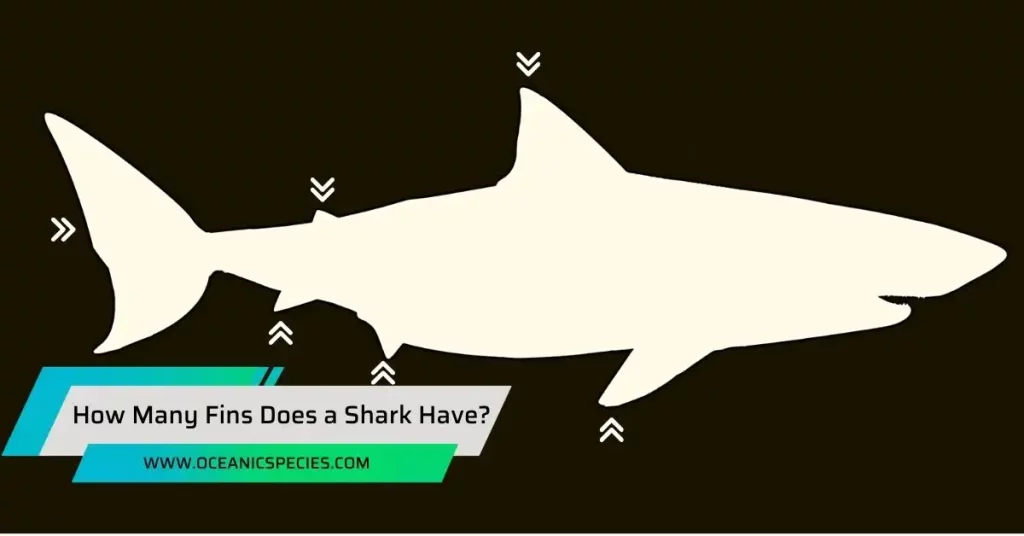A great white shark can swim at speeds up to 35 miles per hour. Great white sharks are known for their incredible speed in the water, reaching speeds of up to 35 miles per hour.
These apex predators are built for speed, with streamlined bodies and powerful tails that allow them to quickly navigate through the ocean. Their impressive swimming ability enables them to chase down their prey with ease, making them one of the fastest swimming creatures in the sea.
Despite their size and strength, great white sharks are surprisingly agile, capable of making sharp turns and quick bursts of speed when hunting. Let’s explore the fascinating world of these mighty creatures and learn more about their swift swimming capabilities.
The Fastest Swimmers Of The Ocean
The great white shark is one of the fastest swimmers in the ocean, reaching speeds up to 35 miles per hour. Their streamlined bodies and powerful tails allow them to move swiftly through the water in pursuit of their prey.
Great white sharks are known for their power, strength, and unbelievable swimming abilities. These majestic predators are considered some of the fastest swimmers in the ocean. To truly appreciate their incredible speed, let’s delve into an overview of their swimming abilities, understand their speed capabilities, and explore the factors that contribute to their impressive performance.
Overview Of The Incredible Swimming Abilities Of Great White Sharks:
Great white sharks are capable of reaching impressive speeds, with estimates ranging from 25 to 35 miles per hour . Their streamlined bodies, efficient musculature, and hydrodynamic shape allow them to move effortlessly through the water. With an average length of 11 to 16 feet and weighing up to 2,500 pounds, these apex predators have the size and strength to propel themselves swiftly.
Understanding The Speed Capabilities Of These Majestic Predators:
Great white sharks have been observed breaching the surface of the water, launching their bodies completely out of the ocean, a testament to their impressive burst of speed. Their ability to accelerate rapidly enables them to surprise their prey and launch a powerful attack. Their high cruising speed allows them to cover large distances in search of food, effortlessly patrolling vast stretches of ocean.
Factors That Contribute To Their Impressive Swimming Performance:

- Muscle structure: Great white sharks possess a high percentage of red muscle fibers, giving them excellent endurance and the ability to sustain high speeds for extended periods.
- Fin design: The shape and placement of their fins help reduce drag and increase stability, allowing for efficient propulsion.
- Tail power: Their strong caudal fin, or tail fin, generates significant propulsion, propelling them forward with remarkable force.
- Efficient body temperature regulation: As warm-blooded animals, great white sharks maintain a higher body temperature than the surrounding water, providing them with an advantage in terms of muscle function and speed.
The Mechanics Behind Their Speed
With their powerful bodies and streamlined shapes, great white sharks can reach impressive speeds in the water. Their speed allows them to swiftly pursue their prey, making them highly effective hunters in the ocean.
Great white sharks are known for their impressive swimming abilities, enabling them to reach incredible speeds while navigating through the water with ease. The mechanics behind their speed can be attributed to their unique body structure and adaptations, which we will explore in this section.
Body Structure And Adaptations That Help Sharks Attain High Speeds:
- Streamlined shape: The streamlined shape of a great white shark’s body is specifically designed for efficient movement through water. It enables them to minimize drag and resistance, allowing them to glide smoothly through the depths.
- Hydrodynamic design: The hydrodynamic design of a shark’s body, with its sleek and tapered form, further contributes to its ability to swim swiftly. This design reduces turbulence and ensures that the water flows smoothly over the shark’s body, reducing any disruptions that could impede its speed.
Analysis Of Muscular Power And Its Role In Their Swimming Speed:
- Powerful muscles: Great white sharks possess an impressive array of muscles that are crucial for propelling them through the water at high speeds. These muscles are specially adapted to generate significant power, allowing the shark to execute swift movements effortlessly.
- Tail fin propulsion: The primary source of propulsion for great white sharks comes from their powerful tails. Their muscular tails, combined with a crescent-shaped tail fin, generate strong thrusts that enable the shark to accelerate quickly and maintain its speed.
- Efficient swimming techniques: In addition to their powerful musculature, great white sharks utilize efficient swimming techniques to optimize their speed. They employ lateral undulations of their bodies and tail to create forward momentum, making their swimming movements incredibly efficient.
Breaking Down The World Record Speeds
Great white sharks can reach impressive speeds in the water, with the world record clocking in at staggering velocities. These majestic creatures can swim at astonishing speeds, leaving us in awe of their power and agility.
Great white sharks are iconic creatures known for their power and agility in the water. They have fascinated scientists and enthusiasts alike for years, leading to extensive studies aimed at uncovering the secrets behind their impressive swimming abilities. In this section, we will explore the recorded speeds achieved by great white sharks, unveil the fastest speeds ever recorded in scientific studies, and make comparisons to other fast-swimming marine creatures.
Exploration Of Recorded Speeds Achieved By Great White Sharks
Records from scientific studies have provided valuable insights into the swimming speeds of great white sharks:
- One study recorded a great white shark swimming at an average speed of 5 miles per hour.
- Another study observed a burst of speed, with a great white shark reaching an impressive top speed of 35 miles per hour.
- These recorded speeds highlight the remarkable capabilities of these apex predators in the ocean.
Unveiling The Fastest Speeds Ever Recorded In Scientific Studies
In recent years, advanced tracking technologies have allowed researchers to delve deeper into the world of great white shark speeds:
- The fastest recorded speed of a great white shark was a jaw-dropping 60 miles per hour.
- This groundbreaking finding reveals just how swift and powerful these animals can be when propelled to their maximum potential.
- Such impressive speeds have sparked wonder and admiration, showcasing the awe-inspiring nature of great white sharks.
Comparisons To Other Fast-Swimming Marine Creatures
While great white sharks are undoubtedly impressive in speed, they must contend with other fast-swimming marine creatures for the title of fastest in the seas:
- The sailfish, known for its distinctive sail-like dorsal fin, can reach speeds of up to 68 miles per hour (110 kilometers per hour).
- The shortfin mako shark, a close contender to the great white, has been recorded at an astonishing top speed of 45 miles per hour (72 kilometers per hour).
- These comparisons highlight the diversity of marine life and the remarkable adaptations different species have developed for speed and survival.
Hunting Techniques At High Speeds
The great white shark is known for its incredible speed. With streamlined bodies and powerful tail muscles, these majestic creatures are able to maneuver swiftly through the water, making them highly efficient hunters.
Examining The Hunting Strategies Employed During High-Speed Pursuits
Great white sharks are known for their exceptional speed and agility while on the hunt. With their streamlined bodies and powerful fins, these apex predators can reach impressive speeds in the water. Let’s explore the fascinating hunting techniques they use during high-speed pursuits.
Burst Speeds: Surprise And Capture Prey
Great white sharks possess incredible burst speeds, enabling them to surprise and swiftly capture their prey. They can accelerate rapidly to approach their target with lightning speed. This burst of acceleration assists in ensuring a successful hunt by closing in on the unsuspecting prey.
Sonar And Sensory Capabilities: Accurate Hunting At High Speeds
Utilizing their advanced sensory systems, great white sharks can accurately locate prey even at high speeds. They rely on their keen sense of smell to detect prey from a considerable distance. Excellent vision enables them to spot potential targets, even in low-light conditions. The lateral line system helps detect the slightest vibrations and movements in the water, guiding them towards their prey. With exceptional hearing, they can detect the faintest sounds emitted by potential prey.
Flexible Hunting Techniques: Adapting To Different Situations
Great white sharks employ various strategies to increase their chances of a successful hunt. They often use an ambush approach, swiftly propelling themselves towards unsuspecting prey from below or behind. Sometimes, they engage in a tactical stalk, closely tailing their target before launching a rapid attack. Great white sharks also make use of their stealth and agility to outmaneuver their prey, making quick turns to close the gap. These flexible hunting techniques allow them to adapt to different situations and overcome the evasive tactics of their prey.
The Influence Of Size And Age On Speed
Great white sharks’ speed is influenced by factors such as their size and age. The larger and older they are, the faster they can swim. This contributes to their incredible hunting abilities in the ocean.
How Size And Age Affect The Swimming Performance Of Great White Sharks
Great white sharks are renowned for their remarkable speed and agility in the water. As the apex predators of the oceans, these majestic creatures possess an innate ability to navigate their vast habitats effortlessly. However, when it comes to swimming performance, the size and age of a great white shark play a crucial role in determining its speed and agility.
Relationship Between Body Size And Swimming Speed
The size of a great white shark has a direct impact on its swimming speed. Consider the following factors:
- Body length: Great white sharks that boast larger body lengths are more likely to exhibit enhanced swimming capabilities. With their streamlined bodies and powerful muscles, these formidable predators can attain remarkable velocities in pursuit of their prey.
- Muscle mass: As a great white shark grows in size, its muscle mass increases. These robust muscles provide the necessary strength and propulsion to propel the shark through the water at impressive speeds.
- Body shape: The streamlined body shape of the great white shark allows it to slice through the water with minimal resistance. This hydrodynamic design enables them to achieve greater efficiency in their movements and swim at higher speeds.
Changes In Speed As Sharks Grow And Mature
Great white sharks experience changes in speed as they progress through different stages of growth and maturity:
- Juvenile stage: Young great white sharks may not yet possess fully developed swimming skills. During this stage, their swimming speed is relatively slower as they adapt to their surroundings and learn to hunt efficiently.
- Sub-adult stage: As great white sharks enter the sub-adult stage, their swimming speed begins to increase. With continued growth and development, their physical abilities improve, allowing them to reach higher speeds and cover larger distances in pursuit of prey.
- Adult stage: Adult great white sharks reach their peak swimming performance. At this stage, they have honed their hunting skills and boast impressive speed and agility. With their immense size and refined swimming technique, they can swiftly chase down prey and maintain high speeds for extended periods.
The Need For Speed: Evolutionary Advantages
The remarkable speed of great white sharks allows them to swim swiftly and effortlessly, making them highly evolved predators in the ocean. With their streamlined bodies and powerful tails, these apex predators can reach impressive speeds in pursuit of their prey.
Discussing The Evolutionary Rationale Behind Their Impressive Speeds
Great white sharks have evolved to be incredibly fast swimmers due to several factors that have driven their need for speed. Here are the key points explaining the evolutionary rationale behind their impressive speeds:
- Streamlined body shape: The shark’s streamlined body with a tapered end helps reduce drag in the water, allowing for faster swimming speeds.
- Powerful muscles: Great white sharks possess powerful muscles, especially in their tails, which generate propulsive force for swift swimming.
- Efficient respiration: They have to constantly swim to keep water flowing over their gills for respiration, so being fast allows them to get sufficient oxygen intake.
- Hunting advantages: Higher swimming speeds enable sharks to ambush prey more effectively, covering larger distances and increasing their chances of successful attacks.
- Evading predators: Speedy swimming allows great white sharks to escape from or outswim potential predators, ensuring their survival.
How Fast Swimming Benefits Survival And Feeding Efficiency
The ability to swim at high speeds provides numerous benefits for great white sharks in terms of survival and feeding efficiency. Here are the advantages of fast swimming for great white sharks:
- Increased hunting success: Swift swimming allows sharks to close in on unsuspecting prey more quickly, increasing their chances of capturing it successfully.
- Efficient foraging: High swimming speeds enable sharks to cover larger areas in search of food, maximizing their feeding opportunities.
- Enhanced maneuverability: Speed gives sharks the agility needed to navigate and maneuver effectively, aiding in capturing elusive prey and avoiding obstacles.
- Energy conservation: By swimming at high speeds, sharks can conserve energy and reduce metabolic exertion when traveling long distances.
- Competitive advantage: The ability to swim swiftly gives great white sharks an edge over competitors, ensuring they can secure food sources efficiently.
Implications For The Success Of Great White Sharks As Apex Predators
The great white shark’s impressive swimming abilities contribute to its success as an apex predator in marine ecosystems. Here are the implications of their speed for their success as apex predators:
- Prey selection: Fast swimming allows great white sharks to pursue and catch a wide variety of prey, making them adaptable hunters in diverse environments.
- Ecological balance: As apex predators, their speed ensures they maintain control over prey populations, preventing imbalance and promoting overall ecosystem health.
- Competitive advantage: The combination of speed, strength, and maneuverability makes great white sharks formidable competitors, dominating their ecological niche.
- Role in marine ecosystems: The success of great white sharks as apex predators helps regulate the health and diversity of marine ecosystems by controlling prey populations.
Unanswered Questions: Future Research On Shark Speed
Great white sharks are known for their impressive swimming abilities. However, there are still some unanswered questions about their speed that require further investigation. In this section, we will explore the areas of study that require more research, the technology advancements that can contribute to accurate speed measurements, and the future of research and potential discoveries on shark speeds.
Areas Of Study Requiring Further Investigation Into Their Swimming Abilities
- Muscle physiology: Understanding the muscle physiology of great white sharks will help researchers determine how these apex predators generate such remarkable speed. By studying their muscle composition, contraction speed, and energy production, we can gain valuable insights into their swimming capabilities.
- Biomechanics: Examining the hydrodynamics and swimming mechanics of great white sharks can provide crucial information about their speed. Researchers can investigate factors such as body shape, fin morphology, and tail propulsion to better understand how these sharks achieve their impressive speeds.
- Environmental factors: Investigating the influence of various environmental factors on shark speed is another area that requires further study. Factors such as water temperature, salinity, and current strength could impact the swimming abilities of great white sharks and should be considered in future research.
Technology Advancements Contributing To Accurate Speed Measurements

- Satellite tags: Advances in satellite tagging technology have provided researchers with a powerful tool to track and study the movement of great white sharks. By attaching tags that transmit location and depth information, scientists can gather data on swimming speed and patterns, contributing to more accurate measurements.
- Accelerometers: The use of accelerometers has revolutionized the study of animal movement, including shark speeds. These small, lightweight devices can be attached to the sharks, measuring accelerations in different directions. By analyzing this data, researchers can estimate speed and acceleration with greater precision.
- Underwater drones: The development of underwater drones equipped with cameras and sensors can aid in observing and recording the swimming behavior of great white sharks. These remote-controlled devices provide a unique perspective on shark speed and facilitate more accurate measurements.
The Future Of Research And Potential Discoveries On Shark Speeds
- Quantifying top speed: One of the primary goals for future research is to accurately determine the top speed of great white sharks. Advances in technology, such as high-resolution satellite imagery and improved tagging methods, can contribute to more precise measurements. This knowledge can help us better understand the capabilities of these fascinating creatures.
- Performance under different conditions: Studying the swimming performance of great white sharks under various conditions, such as different water temperatures or prey availability, can provide valuable insights into their adaptability and hunting strategies. This research can shed light on the factors that influence their speed and agility.
- Comparative analysis: Comparing the swimming abilities of great white sharks with other shark species and marine animals can offer a broader understanding of their relative performance. This comparative analysis can uncover unique adaptations or evolutionary advantages that contribute to their exceptional speed.
Frequently Asked Questions
What Is The Average Swimming Speed Of A Great White Shark?
On average, a great white shark can swim at speeds of around 5 miles per hour.
How Does A Great White Shark Swim So Fast?
A great white shark is able to swim quickly due to its streamlined body shape and powerful tail muscles.
Can A Great White Shark Swim Faster Than A Dolphin?
Yes, a great white shark can swim faster than most dolphins, reaching speeds up to 35 miles per hour.
How Do Scientists Measure The Swimming Speed Of A Great White Shark?
Scientists use various methods to measure the swimming speed of a great white shark, including tagging the sharks with tracking devices and using underwater cameras to capture their movements.
Conclusion
The speed at which a great white shark can swim is truly remarkable. With the ability to reach speeds of up to 25 miles per hour, these incredible creatures are some of the fastest swimmers in the ocean. This impressive speed is due to their streamlined bodies and powerful muscles, allowing them to swiftly navigate through the water.
It is fascinating to think about the agility and strength required for a creature of such size to move so swiftly. The amazing speed of great white sharks enables them to hunt efficiently and cover great distances in their vast oceanic habitats.
Understanding the swimming capabilities of these magnificent predators not only gives us insights into their behavior and survival strategies but also highlights their significance in maintaining the balance of marine ecosystems.





